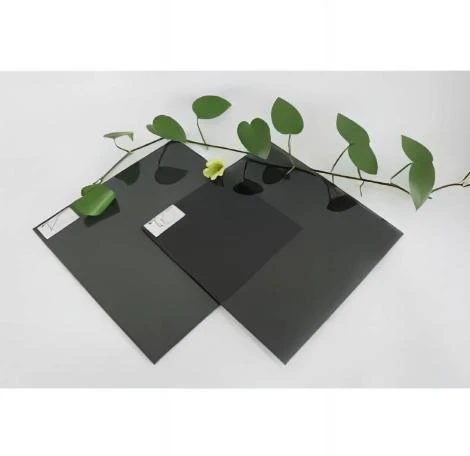The Manufacturing Process of Toughened Glass Key Insights into the Plant Operations
Toughened glass, also known as tempered glass, has become a staple in various industries due to its enhanced strength and safety features. The manufacturing process of toughened glass involves several intricate steps that transform ordinary glass into a robust product capable of withstanding high levels of stress and temperature fluctuations. In this article, we will delve into the operations of a toughened glass manufacturing plant, exploring the key processes, technologies, and benefits associated with toughened glass.
Raw Materials and Preparation
The journey of toughened glass begins with the careful selection of raw materials, primarily silica sand, soda ash, and limestone. These are the fundamental components of the glass. The quality of these materials significantly influences the final product’s strength and clarity. In a modern manufacturing plant, these raw materials are obtained from reliable suppliers and stored in controlled environments to maintain their purity.
Once the raw materials are ready, they undergo a mixing process where they are combined in specific proportions. This mixture is then melted in a glass furnace at temperatures exceeding 1,400 degrees Celsius (2,552 degrees Fahrenheit). The melting process can take several hours, during which chemical reactions occur to form a homogeneous glass batch. The molten glass is then carefully transferred to a forming area.
Forming and Annealing
In the forming phase, the molten glass is shaped into the desired dimensions using various methods such as floating, pressing, or blowing. The floating glass technique is particularly popular, where the glass is floated on a bed of molten tin to obtain even thickness and a flawless finish. After forming, the glass sheets are cooled slowly in the annealing lehr, which eliminates internal stresses that could lead to breakage.
The annealing stage is crucial as it prepares the glass for the toughening process. Properly annealed glass exhibits uniform thickness and structural integrity, which are essential for successful tempering.
The Toughening Process
toughened glass manufacturing plant
The key feature that distinguishes toughened glass from regular glass is the toughening process, which involves a combination of heating and rapid cooling. In a toughened glass manufacturing plant, sheets of annealed glass are subjected to intense heating in a specialized furnace. The temperature is raised to approximately 620 degrees Celsius (1,148 degrees Fahrenheit), causing the outer surface of the glass to expand while the core remains cooler.
Once the glass reaches the desired temperature, it is rapidly cooled using high-pressure air jets in a process known as quenching. This sudden temperature change induces compressive stresses on the surface of the glass while tensile stresses develop in the center. These opposing forces significantly increase the glass's strength, making it up to five times stronger than its non-tempered counterpart.
Quality Control and Applications
Quality control is a critical aspect of toughened glass production. Throughout the manufacturing process, various tests and inspections are conducted to ensure that the glass meets industry standards and customer specifications. This includes checking for optical clarity, thickness uniformity, and the absence of defects such as bubbles or inclusions.
Toughened glass finds applications in numerous fields, including construction, automotive, and consumer goods. Its superior strength and safety features make it ideal for windows, shower doors, glass doors, and even smartphone screens. Additionally, because it shatters into small, blunt pieces rather than sharp shards, it enhances safety in both residential and commercial environments.
The Future of Toughened Glass Manufacturing
As technology advances, the toughened glass manufacturing process continues to evolve. Innovations such as automated handling systems, advanced furnace designs, and improved quality assurance testing are enhancing efficiency and reducing costs. Moreover, with an increasing demand for sustainable building materials, manufacturers are exploring eco-friendly alternatives and recycling processes to minimize waste.
In summary, a toughened glass manufacturing plant operates through a series of precise and controlled processes to produce a product that combines safety, strength, and aesthetic appeal. By understanding these operations, stakeholders can better appreciate the complexities involved in creating one of the most versatile materials in modern architecture and design. As the industry progresses, toughened glass will undoubtedly play a pivotal role in future innovations across various sectors.
 Afrikaans
Afrikaans  Albanian
Albanian  Amharic
Amharic  Arabic
Arabic  Armenian
Armenian  Azerbaijani
Azerbaijani  Basque
Basque  Belarusian
Belarusian  Bengali
Bengali  Bosnian
Bosnian  Bulgarian
Bulgarian  Catalan
Catalan  Cebuano
Cebuano  Corsican
Corsican  Croatian
Croatian  Czech
Czech  Danish
Danish  Dutch
Dutch  English
English  Esperanto
Esperanto  Estonian
Estonian  Finnish
Finnish  French
French  Frisian
Frisian  Galician
Galician  Georgian
Georgian  German
German  Greek
Greek  Gujarati
Gujarati  Haitian Creole
Haitian Creole  hausa
hausa  hawaiian
hawaiian  Hebrew
Hebrew  Hindi
Hindi  Miao
Miao  Hungarian
Hungarian  Icelandic
Icelandic  igbo
igbo  Indonesian
Indonesian  irish
irish  Italian
Italian  Japanese
Japanese  Javanese
Javanese  Kannada
Kannada  kazakh
kazakh  Khmer
Khmer  Rwandese
Rwandese  Korean
Korean  Kurdish
Kurdish  Kyrgyz
Kyrgyz  Lao
Lao  Latin
Latin  Latvian
Latvian  Lithuanian
Lithuanian  Luxembourgish
Luxembourgish  Macedonian
Macedonian  Malgashi
Malgashi  Malay
Malay  Malayalam
Malayalam  Maltese
Maltese  Maori
Maori  Marathi
Marathi  Mongolian
Mongolian  Myanmar
Myanmar  Nepali
Nepali  Norwegian
Norwegian  Norwegian
Norwegian  Occitan
Occitan  Pashto
Pashto  Persian
Persian  Polish
Polish  Portuguese
Portuguese  Punjabi
Punjabi  Romanian
Romanian  Russian
Russian  Samoan
Samoan  Scottish Gaelic
Scottish Gaelic  Serbian
Serbian  Sesotho
Sesotho  Shona
Shona  Sindhi
Sindhi  Sinhala
Sinhala  Slovak
Slovak  Slovenian
Slovenian  Somali
Somali  Spanish
Spanish  Sundanese
Sundanese  Swahili
Swahili  Swedish
Swedish  Tagalog
Tagalog  Tajik
Tajik  Tamil
Tamil  Tatar
Tatar  Telugu
Telugu  Thai
Thai  Turkish
Turkish  Turkmen
Turkmen  Ukrainian
Ukrainian  Urdu
Urdu  Uighur
Uighur  Uzbek
Uzbek  Vietnamese
Vietnamese  Welsh
Welsh  Bantu
Bantu  Yiddish
Yiddish  Yoruba
Yoruba  Zulu
Zulu 

